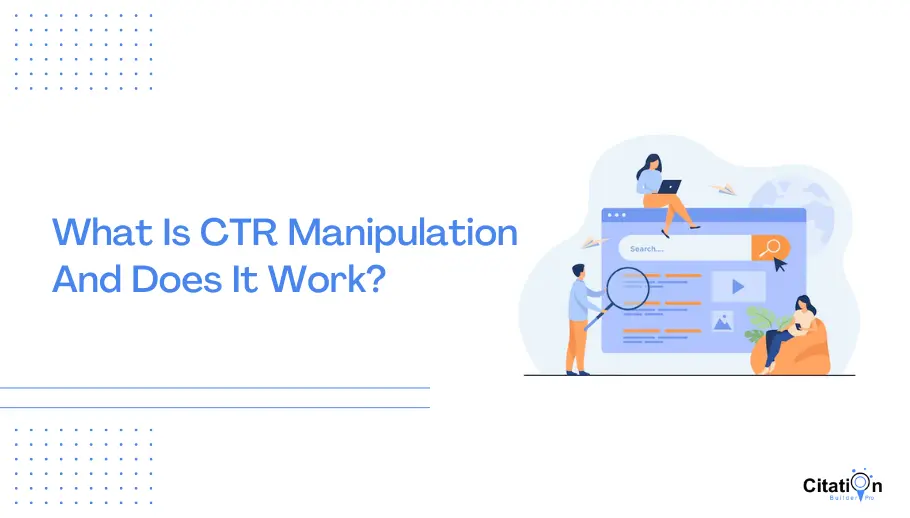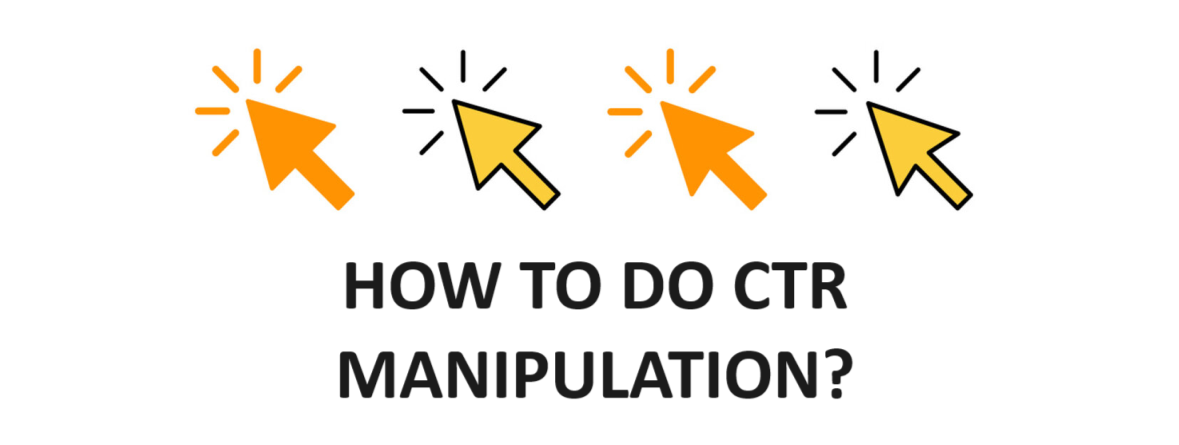Discovering the Connection Between CTR Adjustment Solutions and Customer Behavior
In the world of electronic advertising, the impact of click-through rate (CTR) manipulation solutions on customer habits continues to be a complex and intriguing subject. As on the internet systems increasingly depend on CTR metrics to gauge the success of content, products, and services, comprehending exactly how these adjusted rates impact individual involvement and decision-making procedures is paramount. The interaction in between CTR control and customer actions elevates questions concerning authenticity, credibility, and the honest ramifications of such techniques. By studying the detailed relationship between CTR manipulation services and user behavior, interesting understandings emerge that might reshape our understanding of electronic marketing approaches and their results on consumers.
Impact of CTR Control on Habits
Evaluating the impact of Click-Through Rate (CTR) control on customer behavior discloses essential understandings right into the dynamics of online involvement. CTR adjustment involves artificially blowing up the variety of clicks on a certain link or advertisement to deceive individuals and search engines. This practice can bring about an altered assumption of a web page's appeal or importance, eventually impacting customer behavior.

Moreover, CTR adjustment can skew the data made use of by algorithms to personalize customer experiences. This can lead to users being served material that does not straighten with their preferences or rate of interests, ultimately leading to a decrease in customer complete satisfaction and engagement. Comprehending the impact of CTR control on customer actions is important for preserving openness and count on in on the internet communications.
User Involvement With Adjusted CTR
User engagement with manipulated CTR data typically causes skewed understandings of on-line content popularity and relevance. When users communicate with material based on synthetically inflated Click-Through Fees (CTR), they might think that specific info, products, or services are more preferred or reliable than they in fact are. This can cause users making decisions based upon deceptive information, causing possibly undesirable results.
Interaction metrics like likes, shares, comments, and time spent on a webpage are usually affected by CTR control. Customers might be a lot more inclined to engage with content that shows up to have higher involvement rates, even more perpetuating the cycle of manipulated assumptions. Because of this, content developers and marketers may prioritize generating material that generates high CTR instead of concentrating on producing really valuable and pertinent material.

Mental Results of CTR Control

Additionally, the psychological effects of CTR manipulation can likewise materialize in altered decision-making procedures. Individuals may be much more likely to click on web content exclusively based on its perceived appeal, as opposed to its actual worth or significance to their needs. This behavior shift can cause a shallow involvement with on-line content, where individuals may overlook high-quality however much less prominent offerings for those with synthetically increased CTRs.
Basically, the mental implications of CTR control highlight the importance of keeping transparency and credibility in online interactions to cultivate authentic individual interaction and trust.
Moral Considerations in CTR Manipulation
CTR control increases worries regarding tricking customers, distorting information analytics, and jeopardizing the reliability of on the internet content. By artificially blowing up CTR, users might be misdirected right into clicking on web links or ads they would not have actually picked or else, leading to an insincere online experience.
One more ethical facet to ponder is the justness of adjusting CTR to obtain an unreasonable benefit over rivals. Participating in such methods not just breaks principles of fair play yet likewise undermines the trust that customers position in on the internet platforms. It is important for businesses and electronic marketing experts to promote honest standards in their techniques to make sure transparency, reputation, and long-lasting sustainability in the online setting.
Ramifications for Digital Marketing
With the increasing dependence on electronic platforms for advertising and marketing functions, the practice of controling click-through prices (CTR) postures substantial ramifications for the performance and honesty of electronic marketing methods. CTR manipulation can cause manipulated data analytics, misleading marketers right into thinking that their campaigns are doing far better than they actually are. This can lead to misallocation of sources, with business see this page spending in underperforming strategies based on falsified CTRs. When individuals recognize that CTRs have actually been adjusted, it can erode count on click here for more info in the brand name, leading to long-lasting unfavorable effects for consumer commitment and brand name reputation.
Additionally, the usage of CTR adjustment solutions can develop an unreasonable affordable landscape, where business that take part in such techniques get an artificial benefit over those that stick to honest advertising requirements. This can stifle development and creative thinking in electronic advertising, as success becomes more about adjustment methods than supplying authentic value to customers. Inevitably, the ramifications of CTR manipulation for electronic advertising prolong beyond temporary gains, affecting the overall sustainability and reliability of advertising and marketing initiatives in the digital realm.
Verdict
To conclude, the connection between CTR adjustment services and customer behavior is complicated and complex. The influence of CTR control on behavior, customer involvement with manipulated CTR, emotional impacts, moral considerations, and implications for digital marketing all play a role fit this relationship. Comprehending these characteristics is crucial for online marketers and researchers alike in order to navigate the honest implications and maximize the effectiveness of their digital marketing strategies.